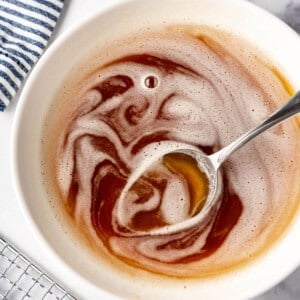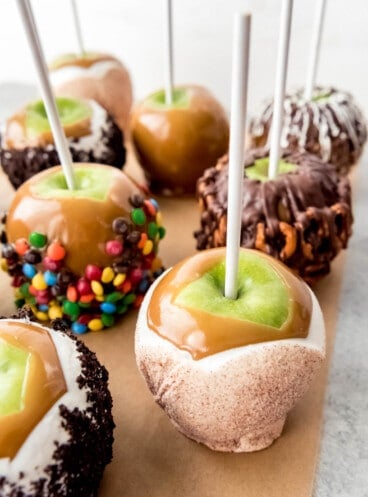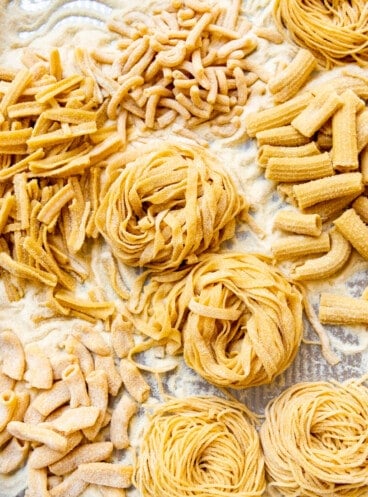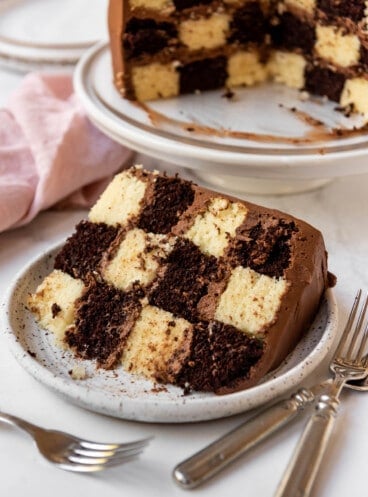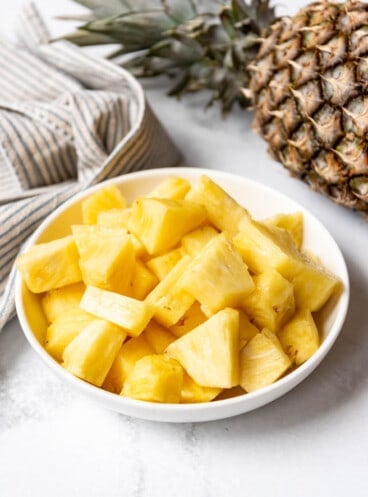Learn how to brown butter with this easy tutorial and take your baked goods and savory dishes to the next level! This stuff is like liquid gold and adds an incredible nutty flavor and depth to your favorite recipes.
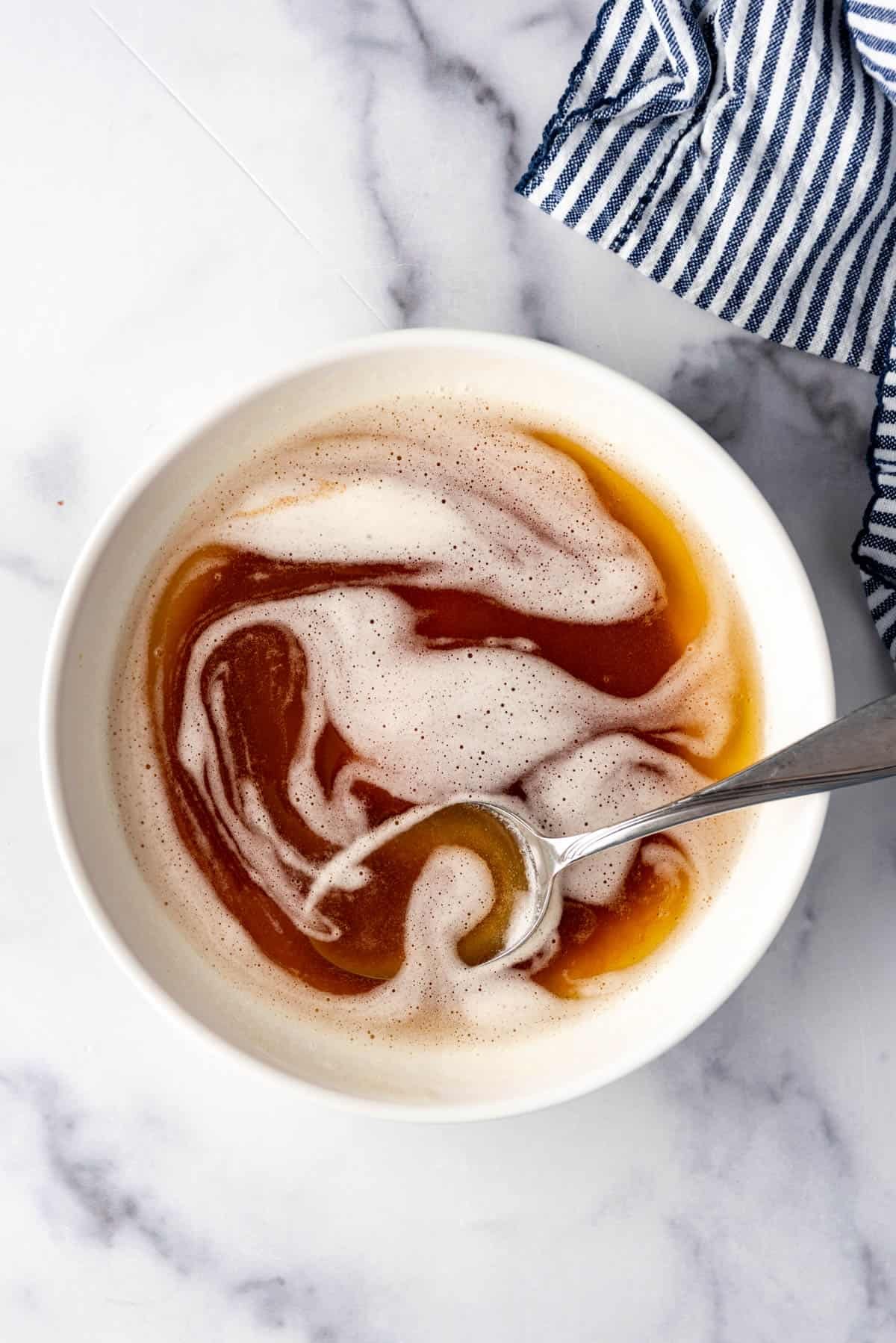
Browned butter is a key ingredient in a lot of professional and home kitchens for getting that elevated flavor that makes a dish that much better. We love using it in our rice krispies treats and cookie recipes, but it’s also great over shrimp, grilled fish, or steak or in pasta dishes (especially gnocchi or ravioli!) as well.
It has a toasty, nutty, almost toffee-like flavor profile that will make your kitchen smell wonderful and your food taste like you are at a fine-dining restaurant or high-end bakery.
What is brown butter?
If you aren’t familiar, browning butter is a cooking technique where you cook regular salted or unsalted butter over medium heat until the toasted milk solids in the bottom of the pan turn a light brown or amber color with a nutty aroma and a portion of the water content of the butter has cooked off.
The process is simple and pretty quick, but you’ll want to watch carefully because the butter can go from browned to burnt if you aren’t paying attention to it.
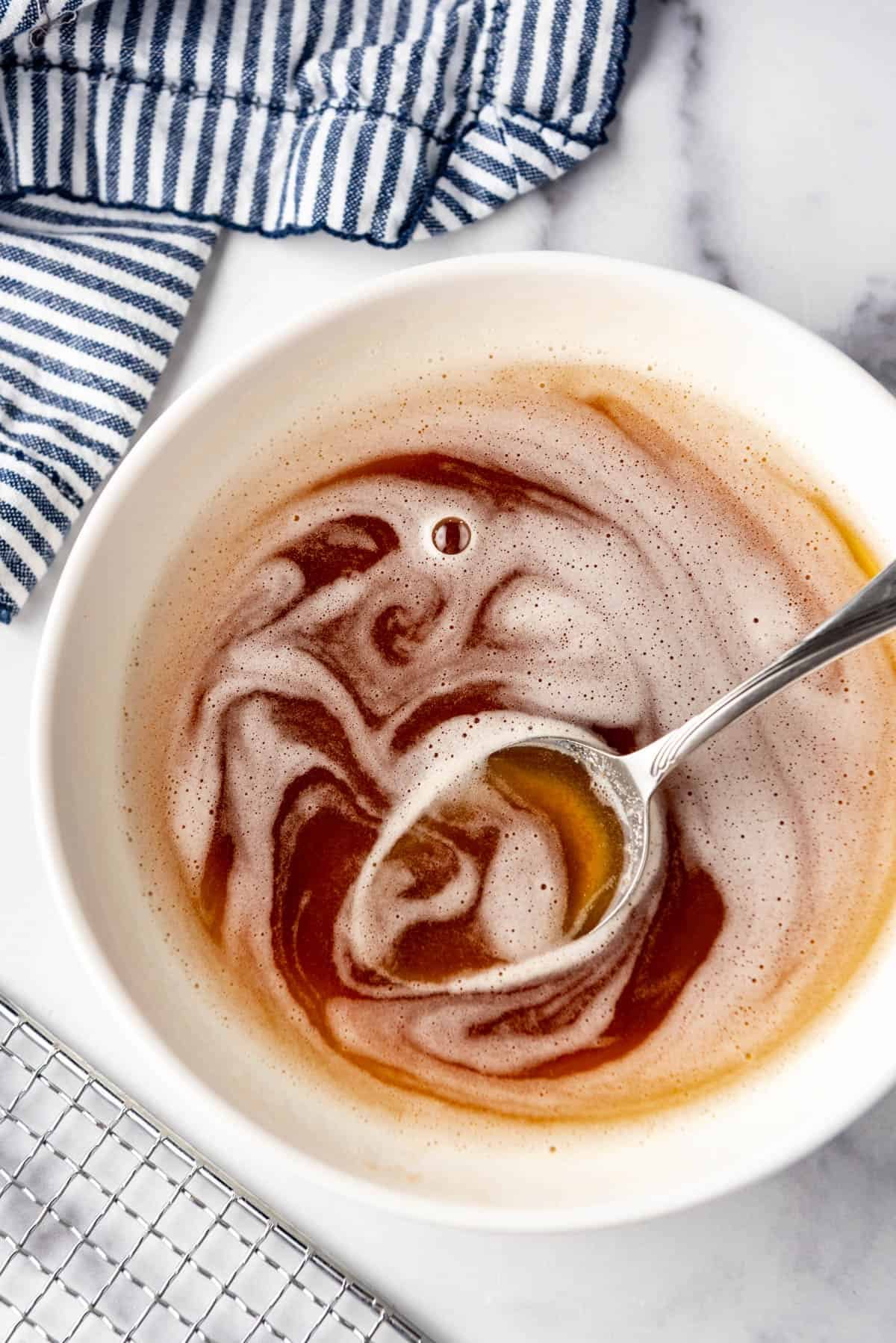
Does the type of butter matter?
Nope, not at all. American butter contains about 20% water content. European butters might contain less, but the technique is the same regardless of the origin of your butter.
I personally only use salted butter in my kitchen, but unsalted butter works just as well. The main difference between the two is about ¼ teaspoon of salt in each ½ cup stick of butter, so if you are using unsalted butter in a recipe that calls for salted butter, you might want to increase the amount of salt by that amount.
PRO TIP: I don’t recommend browning less than ½ cup of butter at a time. It’s too easy to burn it when dealing with smaller quantities in my experience.
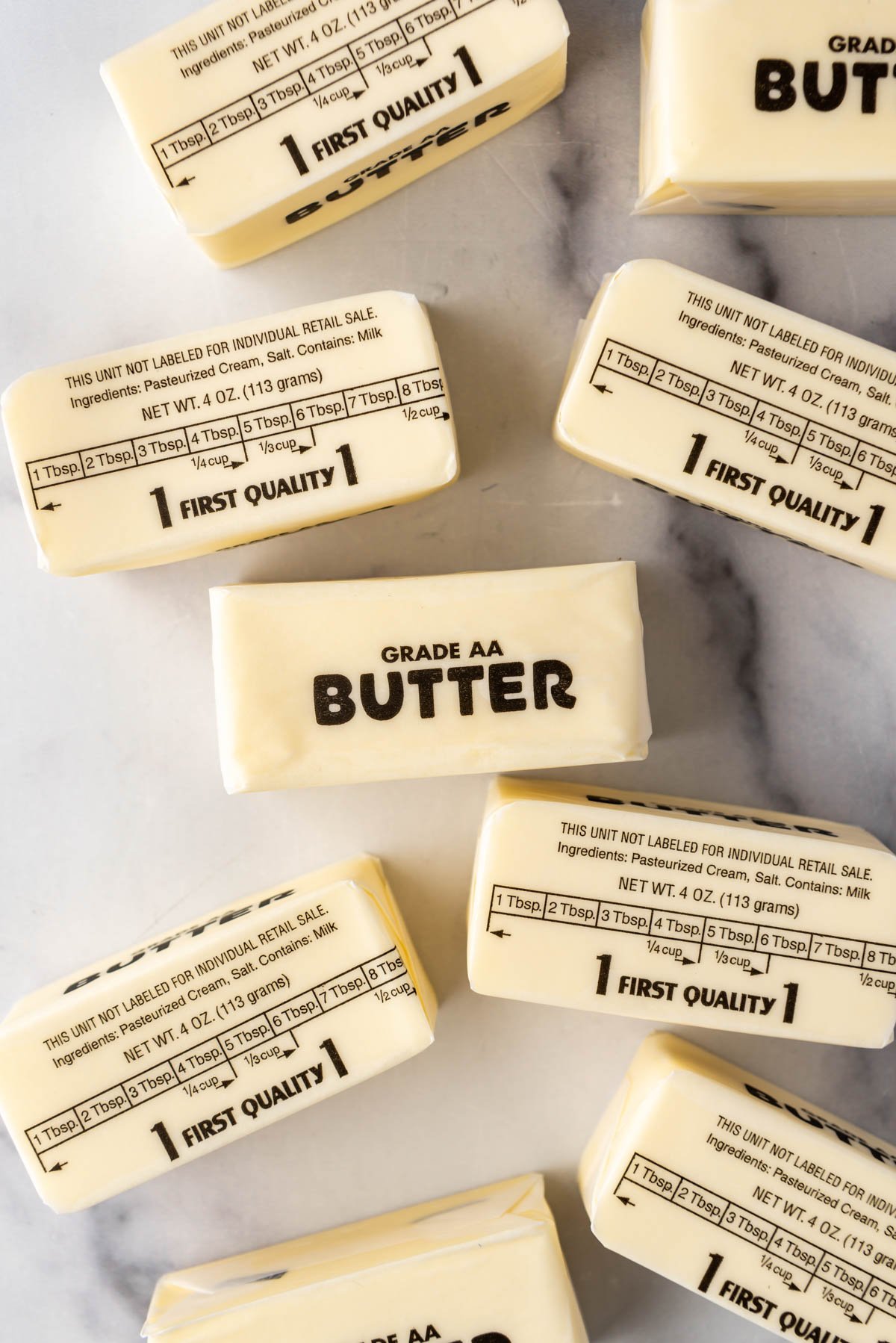
How to Brown Butter on the Stovetop
- Melt the butter. I recommend using a light colored medium saucepan or skillet (so you can see the color of the butter as it cooks–something stainless steel or white is perfect) over medium-low heat to melt the butter completely. This takes a minute or two, especially if the butter is very cold straight from the fridge, but resist the urge to bump up the heat and melt it faster. This technique is largely about temperature control and timing.
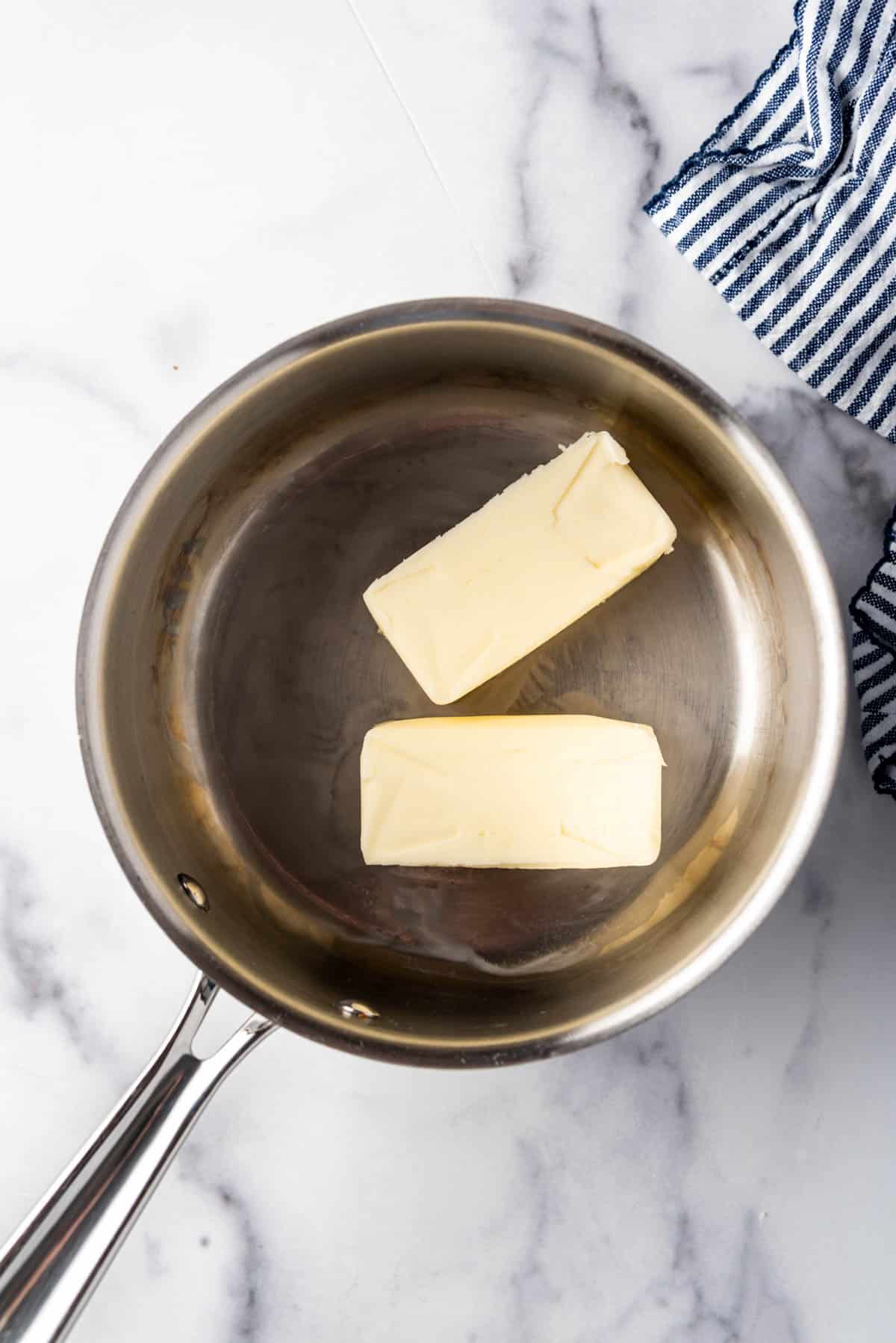
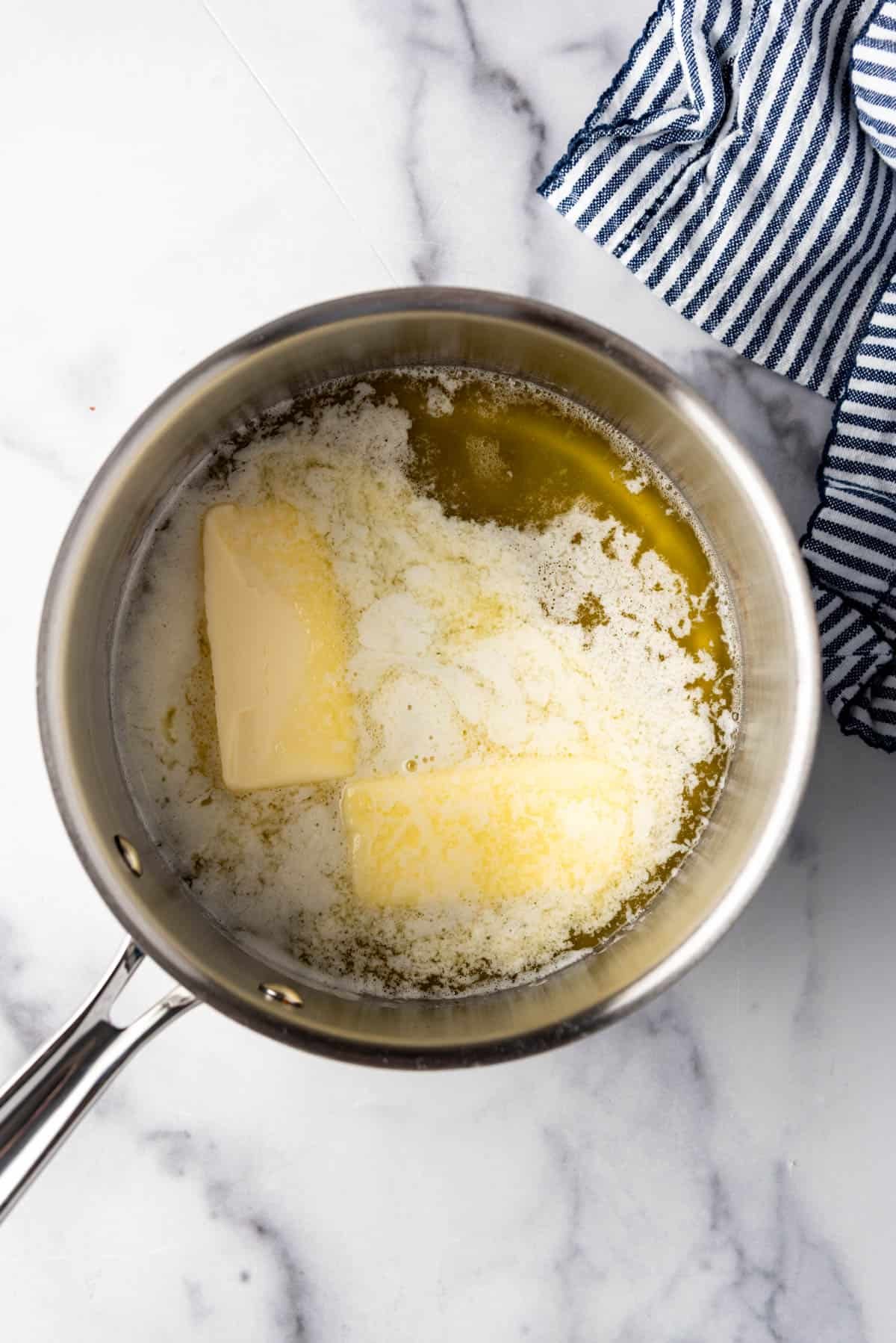
- The butter will foam, then brown. Once the butter has melted, go ahead and increase the heat to medium. Continue to stir or swirl the butter in the pan so the milk solids cook evenly on the bottom. You will notice the butter get foamy, then start to bubble and spit as some of the water cooks off. Be careful so it doesn’t splatter your hands or clothes!
- Watch for browned bits. Use a spoon to cut through any foam and lift some of the butter from the bottom of the pan. Once you start to notice brown flecks in the clear golden liquid, the brown butter is done and can be removed from the heat.
- Cool. Carefully pour the all of the hot butter, including the browned bits, into a heat-proof container to cool so it doesn’t continue browning from the residual heat of the pan, which can cause it to burn. For most baking recipes, you will want to let the brown butter cool at least slightly because it will be hot enough to melt sugars and cook eggs if you immediately add it to a recipe without cooling it down first.
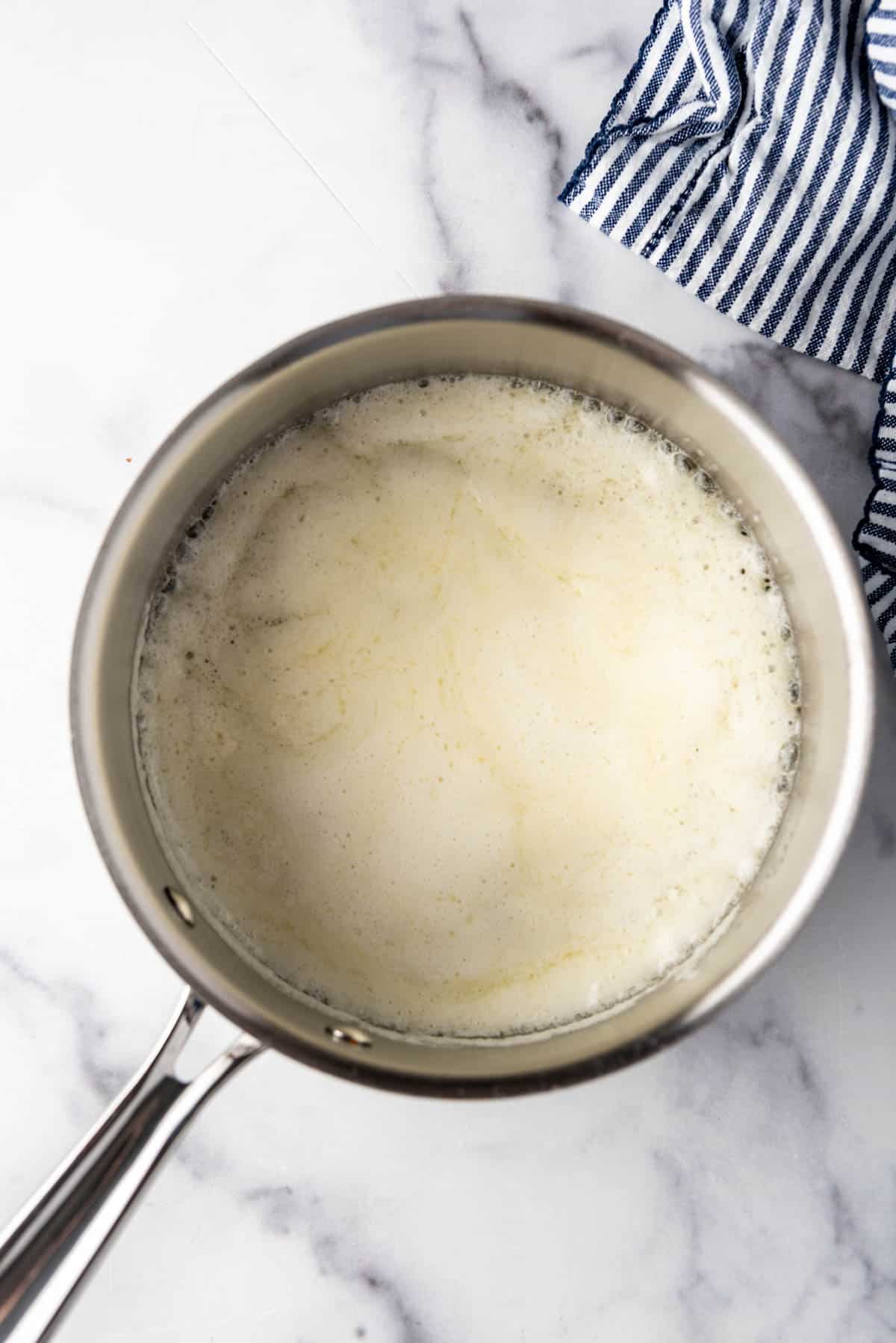
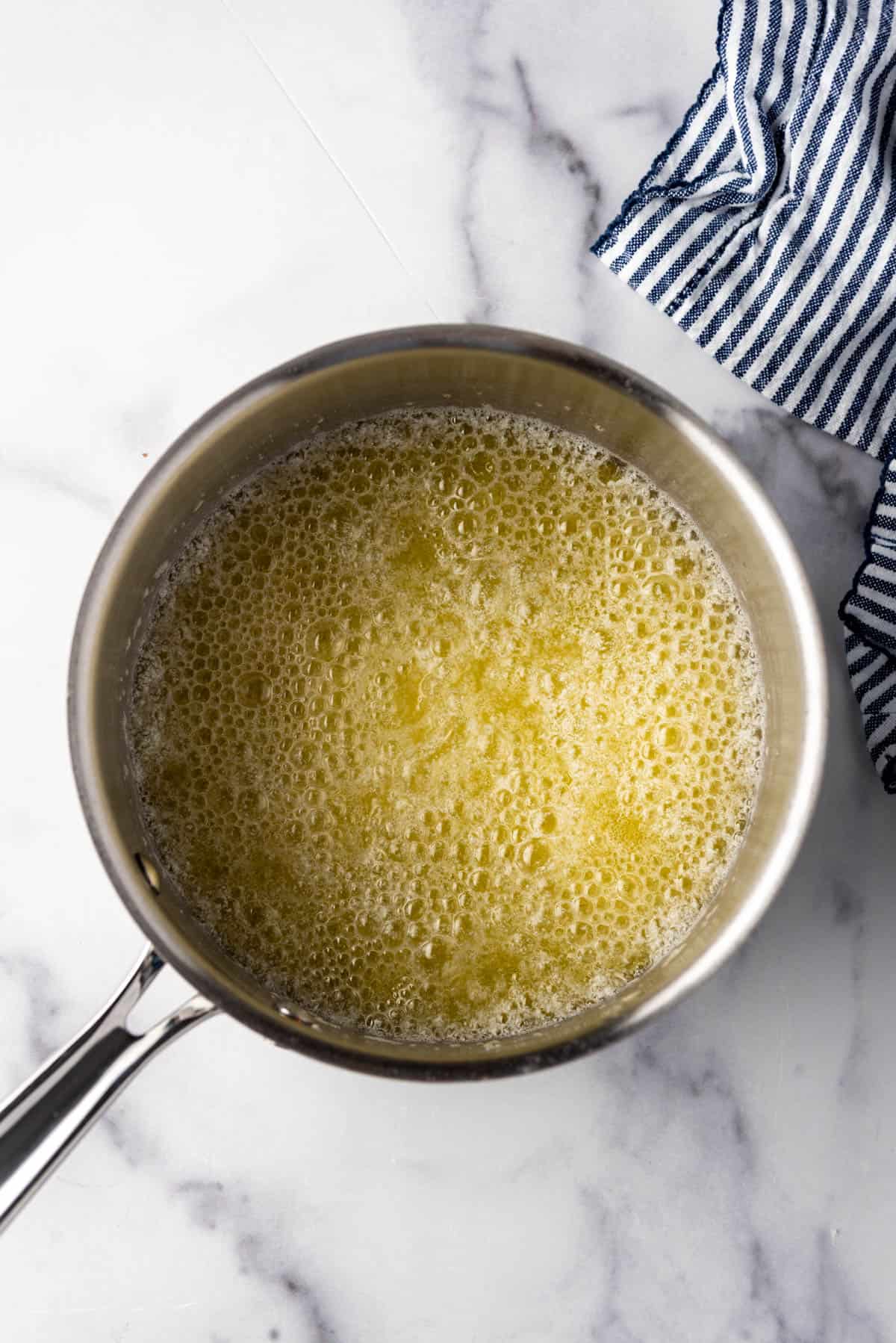
Don’t let it burn!
Be sure not to walk away from the butter while it is cooking because it can easily go from brown to burnt if you aren’t watching it. Although simple, this is one task you don’t want to undertake with too many distractions.
FAQ’s
I don’t recommend using brown butter in a recipe that calls for regular butter unless you make the brown butter, then pour it into a measuring cup to make sure you use the same amount called for in the recipe. One cup of butter cooks down to about ¾ cup of brown butter, so you would be short some butter if a recipe calls for a full cup.
Yes, you can absolutely freeze brown butter to use in recipes. In fact, it’s a great idea to make more than you need and freeze it in an ice cube mold to throw in a pan after searing chicken, fish, or steak for a shortcut to a quick and easy pan sauce with tons of flavor. It will keep for 3-4 months in an airtight container in the freezer.
Supposedly the French. Brown butter is a French cooking technique known as beurre noisette or “hazelnut butter”, likely for its toasty, nutty flavor.
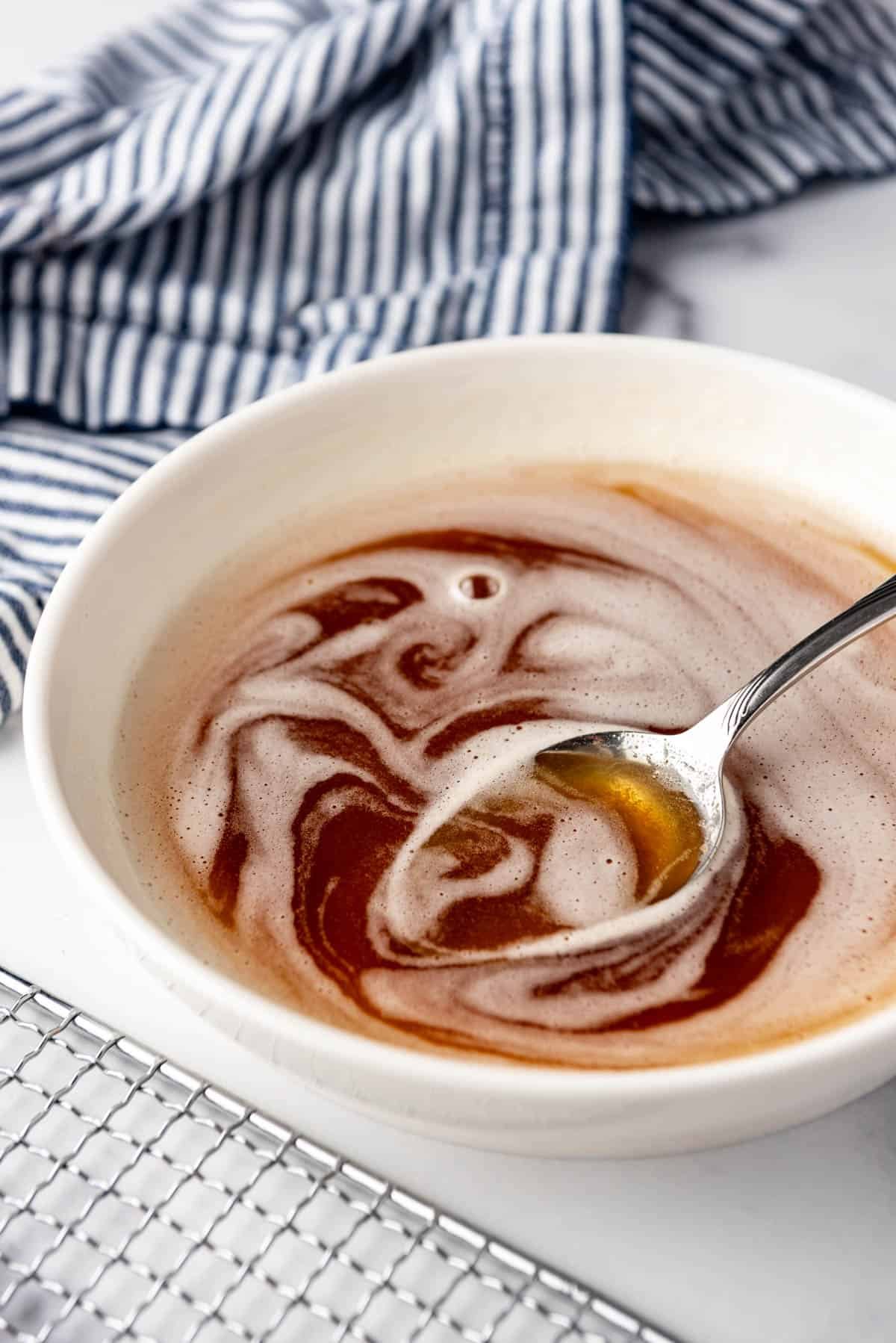
Sweet & Savory Recipes that use Brown Butter
- Salted Brown Butter Rice Krispie Treats
- Garlic Brown Butter Mashed Potatoes
- Brown Butter Chocolate Chip Skillet Cookie
- Seared Scallops with Brown Butter
- Halibut with Lemon Brown Butter Sauce
- Brown Butter Sage Pasta
- Carrot Coffee Cake with Brown Butter Glaze
- Brown Butter Cream Cheese Frosting
How to Brown Butter
Ingredients
- 1 cup (227g) salted butter (2 sticks)
Instructions
- Gently melt the unwrapped sticks of butter in a light-colored medium saucepan over medium-low heat.1 cup (227g) salted butter
- Increase the heat to medium and continue to cook the butter while stirring or swirling frequently with a wooden spoon or heatproof spatula so that it cooks evenly on the bottom of the pan. Watch for the butter to foam, bubble, and spit as some of the water content cooks off. Be careful of getting splattered with hot melted butter.
- Look for browned flecks in the bottom of the pan and notice the aroma of the butter turning nutty and fragrant. These are the main indicators that your brown butter is ready and should be removed from the heat. You can also watch for the foaming to die down and a decrease in the spitting and sizzling.
- Carefully pour the hot browned butter into a heat-safe container so that it doesn't continue to cook and burn from the residual heat of the pan. Let it cool before using.
Notes
- Yield: About ¾ cup brown butter.
- Storage: You can store in the fridge for up to 2 weeks or in the freezer for around 3 months.
